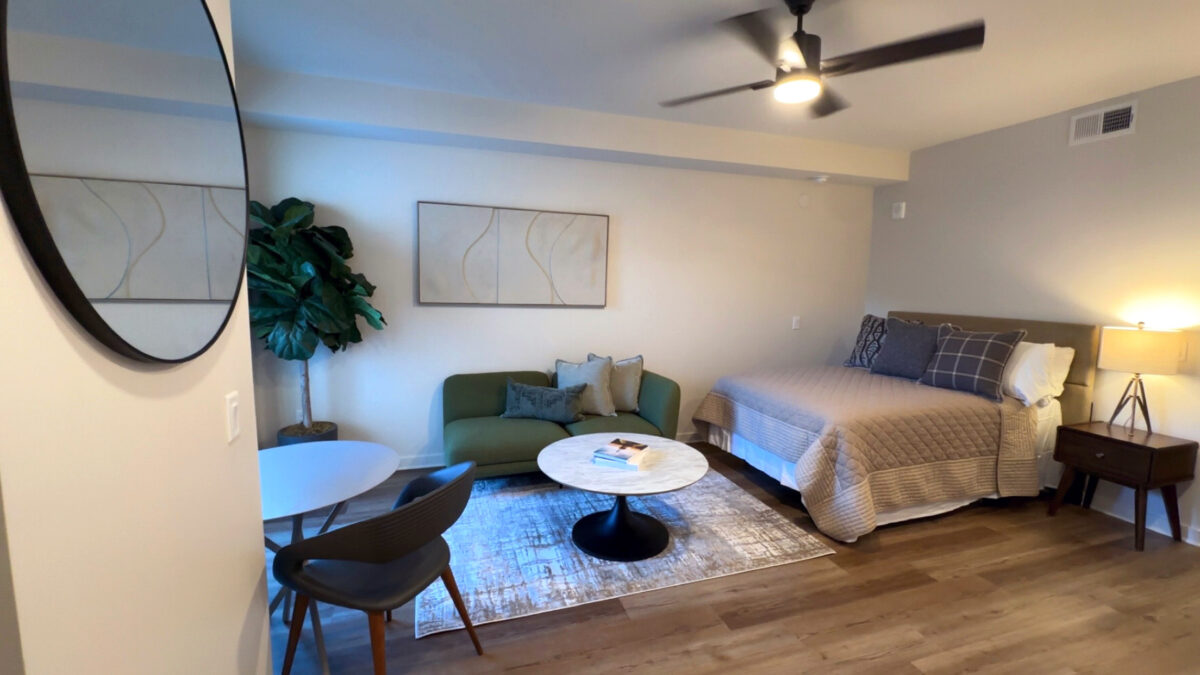There’s been a seismic shift in the business world. COVID-19 has shaken things up and changed how we work. The role of the office has changed. Remote work has proven to be effective for many organizations that never thought it was possible before. Health and safety guidelines for bringing people back to the office have also accelerated the evolution of the workspace.
What does the future hold? We’ve got three predictions for what the future workspace will likely look like in 2021 and beyond.
More Investment in Health and Safety
The Society for Human Resource Management (SHRM) predicts that health, safety, and hygiene will be top priorities for businesses through 2025. Within the next couple of years, most leaders plan to hire more health and safety employees. Integrating testing protocols, detection tools, and disinfection will remain in high demand, particularly since most business leaders anticipate that there will likely be another pandemic in the future.
In 2019, the National Institute for Occupational Safety and Health gave detailed information to the American Journal of Industrial Medicine on future work issues and the approaches that would most likely be used to address them. Health and safety were already a growing issue before the pandemic, but in the future, it will be a driving force for businesses looking to recover and prepare for future disruptions. One of the approaches that organizations are starting to take now is integrating sensor technology for everything from contactless office entry to enhanced safety.
4SITE by CORT is a prime example of the type of technology we’ll likely be seeing in future workplaces. Their sensors not only make it easier for organizations to facilitate contact tracing without invading employees’ privacy. They also provide the insights needed to evaluate the physical office footprint and give vital data to decide what type and size space is needed for the future of the business.
Sustainability Will Become a Priority
SHRM predicts that more businesses will be looking at how they’re impacting the environment in the post-COVID work world. One study from Harvard suggests a correlation between small increases in air pollution exposure and COVID-related deaths. Experts have linked climate change to make the situation worse. This, coupled with the devastating effects of climate-linked disasters like the West Coast’s fires and the increasing ferocity of hurricanes is driving a greater emphasis on sustainability and green design.
Architects are already seeing offices becoming greener. Within the next decade, the demand will only increase. Sustainability credentials will become almost as important as facilities and lifestyle in how businesses choose their office space. Nature and sustainable features are going to be heavily integrated into the workspace.
Reducing a business’s impact on the environment goes beyond buildings. As more employers embrace remote work, offices are using less energy and fewer commuters are on the road. Another strategy? Furniture rental. For example, with CORT furniture rental’s business model, businesses get access to high-quality furniture and office solutions on-demand, keeping your business nimble and able to quickly respond to changing conditions. When you’re done with it, we pick it up, fix it, clean it and sell it at one of our furniture outlets, keeping more than 100,000 tons of waste out of landfills.
Open Floor Plans Will Give Way to More Focused Use Areas
In the 1980s, open office design was all the rage. It was hailed as an effective strategy to break through social walls dividing people, making it easier for teams to collaborate and managers to communicate with employees. Open floor plans remained the norm for many organizations, with most cramming as many desks in as possible to maximize their square footage.
Then, COVID struck and these cavernous spaces remained empty. As organizations begin planning when and how they will bring employees back to the office, they’ve also been reevaluating what their workspaces will look like. What people need from in-office interactions. How teams will use the office space when others remain home.
Future workspaces will cater to what workers need most, including pods and insulated, private spaces for focused work. There will still be open areas for collaboration and teamwork. Many offices will adopt more of a social club vibe, with an increased focus on employee comfort, transforming these spaces into areas where employees opt to choose their time.
We’ll see this play out in a variety of ways. Spaces will better cater to employees’ working lives. They will also provide additional amenities to balance and enhance the workday. These spaces give workers an alternative to working from home. And by adopting a more club-like atmosphere with comfortable furnishings and open areas ideal for networking, workspaces of the future will become hubs of collaboration and teamwork.
Ready to Learn More about Your Options?
Keeping an eye on trends and forecasting what might be ahead for the workplace is one thing. Being ready to make changes is another.
That’s where partnering with the subject matter experts at CORT can help. We’re more than just a large inventory of future-ready furnishings. Our expert team is ready to provide help based on your needs. While not all solutions work for all businesses. CORT offers personalized support and an extensive selection of custom solutions.
Whether you’re looking for support with creating the best furniture layouts to get the most out of your square footage or looking to adopt sustainability into your business model, CORT Furniture Rental is here for you. Discover how we can help you stay agile and work smarter today.





